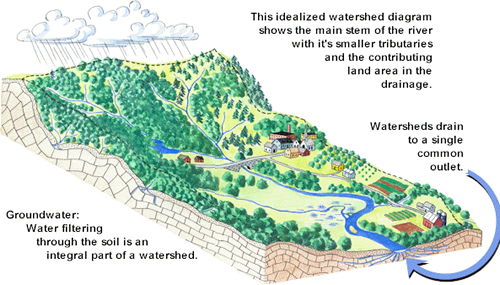What is a Watershed?
A watershed is an area of land across which water (rainfall, snow melt) flows on its way to its outlet: a stream, river or lake. We all live in a watershed!
The streams in the Little Lehigh Watershed serve as crucial habitats and food sources for countless species of animals, insects, birds and plants. The streams are vital to our local communities by providing clean drinking water, supporting agriculture, and offering recreational opportunities.
Image compliments of Lehigh County Conservation District.
Where is the Little Lehigh Creek Watershed?
Use Map below to find out where you live in our watershed.
The Little Lehigh Creek Watershed is the land area in eastern Pennsylvania that drains the Little Lehigh Creek and its tributaries. The Little Lehigh Creek has many tributaries including Cedar Creek, Jordan Creek, and Trout Creek.
The population of the watershed is well over 200,000 people. If you live or work in the cities and townships mentioned below, you are likely part of the Little Lehigh Watershed.
The Little Lehigh Creek flows from Topton in Longswamp Township, Berks County, through Lower Macungie and Salisbury Townships and the City of Allentown in Lehigh County. The Creek converges with the Lehigh River in Allentown. Tributaries (Toad, Swabia and Liebert Creeks) also drain Upper Milford Township, Emmaus, Alburtis and Macungie Boroughs, and South Whitehall Township.
The Jordan Creek is an 80 square mile sub-watershed of the Little Lehigh. The Jordan arises from springs on Blue Mountain in northern Heidelberg Township. The Creek flows through Lowhill, North and South Whitehall, and Whitehall townships before flowing into the Little Lehigh in Allentown. Tributaries to the Jordan (Lyon, Mill and Hassen Creeks) drain portions of Weisenberg, Lynn, Washington, and Upper Macungie townships.
